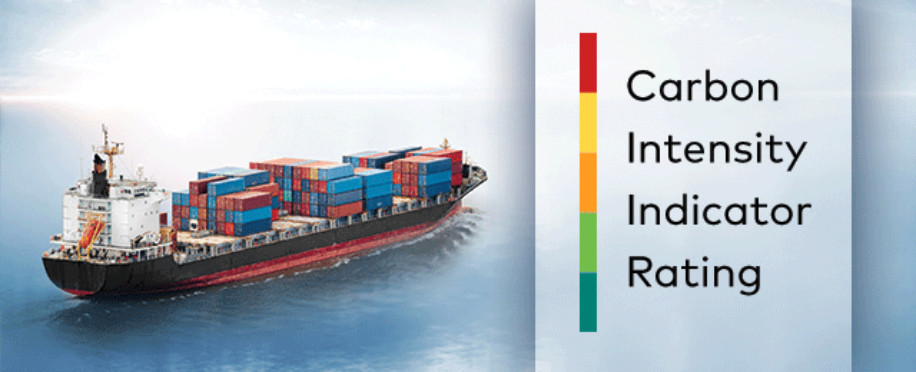Copyright © 2026 lmitac.com All Rights Reserved. Contact - Terms and Conditions - Privacy Policy - Quality Policy - Become an instructor - Vacancies - Sitemap
London Maritime Academy is a trade name for London Premier Groupversion: 2.9.0
London Maritime Academy is a trade name for London Premier Group

Posted on : 11/21/2023, 11:02:12 PM
Last Update : 11/21/2023, 11:04:54 PM
The International Maritime Organisation (IMO) added the carbon intensity indicator (CII) as a new indicator to follow since January 2023. Moreover, the first evaluation will be run at the beginning of 2024.
Furthermore, the carbon intensity indicator (CII) has been used for years as an indicator of greenhouse gas emissions observation, yet it has recently been added to the maritime industry.
The article will discuss the carbon intensity indicator, how it could be measured and evaluated, and the most important FAQs.
The Carbon Intensity Indicator (CII) is the term used to measure and assess a vessel's operational efficiency concerning its greenhouse gas emissions (GHG) related to its cargo capacity and sailing distance.
The CII was forced by the International Maritime Organisation (IMO), as a rating system that became necessary to measure ships exceeding 5,000 gross tonnages (GT) on international voyages.
Moreover, the CII regulations apply to all ships above 5,000 GT, including bulk carriers, tankers, LNG carriers, vehicle carriers, container ships, general cargo ships, refrigerated cargo carriers, cruise ships, gas carriers, and combination carriers.
On the other hand, next to the CII, the IMO also launched the Energy Efficiency Index for Existing Ships (EEXI) rating, which also plays a vital role in the IMO’s efforts to empower the green shipping innovations and reduce the maritime shipping industry’s greenhouse gas (GHG) emissions by 2050.
In the maritime training courses, especially the ones focusing on marine environment protection, you will learn how to calculate the CII and come out with a good result that will help you build your ship's working strategy in the future.
To calculate the carbon intensity indicator (CII), you need to know these emissions and energy ratings first:
Annual fuel consumption.
Your ship's CO2 emission factor (calculated based on the type of fuel used to power the boat).
Annual distance sailed.
Design the deadweight of the vessel (the maximum amount a ship could carry of cargo plus crew, fuel, etc).
CII = (Annual Fuel Consumption X CO2 Emission Factor) / (Annual Distance Sailed X Design Deadweight of the Vessel)
On the other hand, the outcome of the equation will then be used to rate the ship within a five-tier scale, ranging from A (most efficient) to E (least efficient).
Moreover, if a ship is rated D for three years in a row or E for one year, then its company will be asked to develop a corrective action plan to show how the ship will be brought to a minimum C rating.
There are many attached benefits to the carbon intensity indicator (CII) that the IMO highlighted, and here are the most important ones:
Positive environmental impact as the CII is a tool that helps reduce the GHG emissions from the maritime industry by encouraging ships to operate more efficiently.
Ships with lower carbon intensity indicator (CII) ratings are more efficient and produce fewer emissions, leading to cost savings for ship operators—making these ships more attractive to charterers, insurance companies, and ports.
Taking care of the carbon intensity indicator (CII) is a positive way for the maritime industry to demonstrate to the global society that it is taking the required steps to reduce GHG emissions seriously and is working to decrease its emissions.
Knowing the answers to these popular questions will help you understand the CII concept better on all levels:

There are several things that ships can do to improve their CII rating, including:
Reducing speed can significantly reduce fuel consumption and CO2 emissions.
Using more efficient engines and propellers.
Optimising voyage planning.
Reducing fuel consumption by using auxiliary engines less frequently.
Using renewable energy.
The CII rating is assigned to one of five categories, ranging from A (most efficient) to E (least efficient), and here are the CII rating categories:
A: Very efficient operation.
B: Efficient operation.
C: Moderately efficient operation.
D: Needs improvement.
E: Inefficient operation.
The carbon intensity index (CII) measures a ship's energy efficiency and is given in grams of CO2 emitted per cargo-carrying capacity and nautical mile.
Moreover, it is essential because it offers a way to measure and compare ships' efficiency and inspires them to operate more efficiently and reduce their greenhouse gas emissions.
Following the IMO rules and regulations to meet the required carbon intensity indicator (CII) will protect the environment and help maritime businesses run more efficient and cost-effective processes.
However, that could only be done by updating your ships and equipment and training your team to manage them effectively.